Daytona's Rolex 24 Was the Start of the End for the Acura NSX GT3
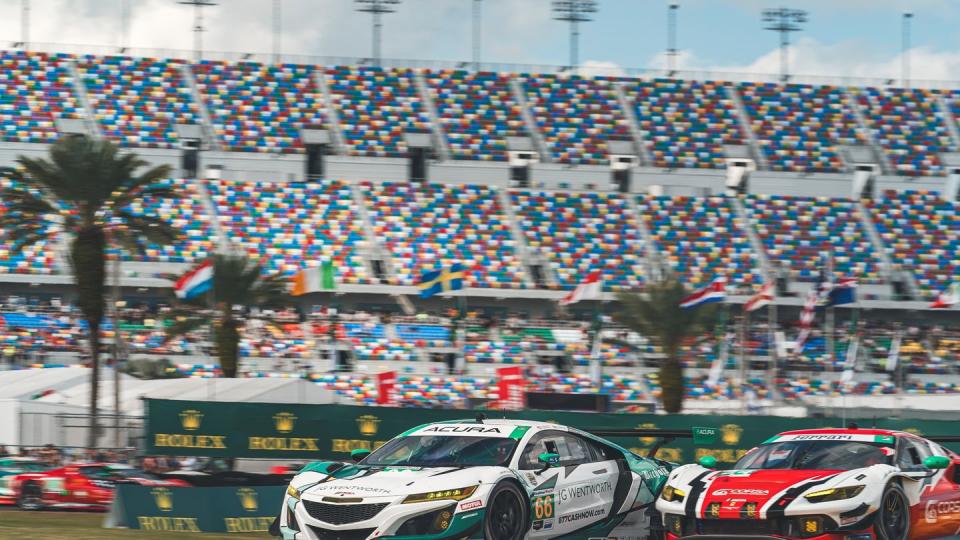
With a Ferrari 296 GT3 gnawing at her car's white and green vinyl, Katherine Legge dove into Turn 2 of Daytona's infield with her team's Acura NSX GT3 Evo22 to escape dropping a position, while staging an attack on the slower Porsche 911 GT3R ahead of her. Legge and her three teammates from Gradient Racing wasted no time putting pressure on the GTD Pro drivers in the class above. They had a strong start to the 24-hour race, beginning the endurance battle in P3 among GTD entrants. Unlike previous years, No. 66 was the only NSX in the 59-car field and likely the last time we'll see one compete at the Rolex 24 event where it had debuted.
While 2023 was the final model year for Acura's sports car, Honda Racing Corporation (HRC) trackside engineer Wayne Gross told us 2024 will be the final year they support the NSX's GT3 program in IMSA, SRO, and Japan's Super GT. The GT3 car will remain homologated for racing until 2029, meaning a privately owned team could technically enter one, though it's unlikely. Still, the NSX section within the 18,000-pound buffet of control arms, turbochargers, powertrains, carbon-fiber bits, and brake pads that is HRC's semi-trailer will go the way of the K-mart K Café at the end of this season.
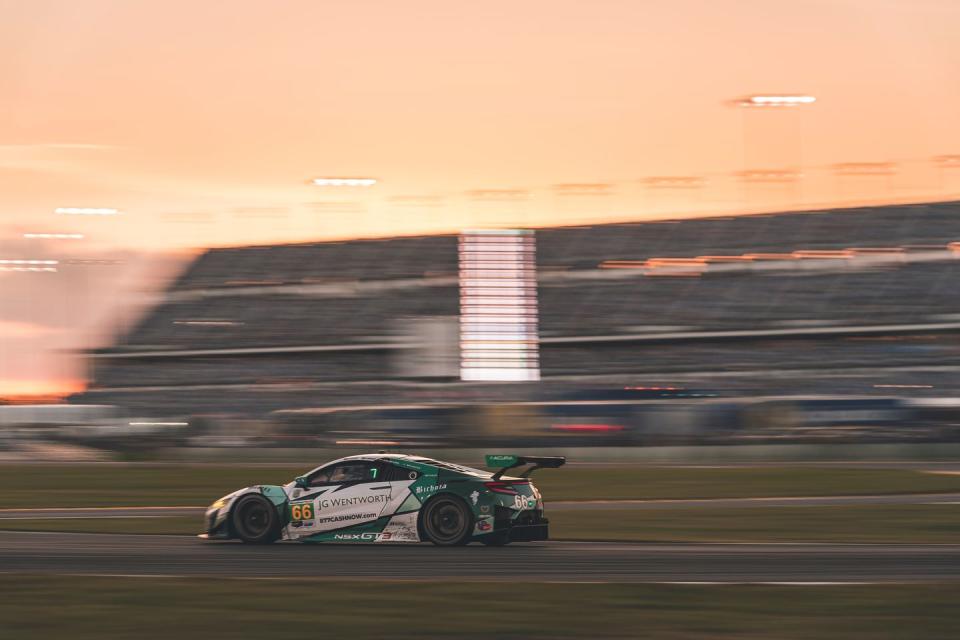
Endurance Since 2017
The NSX GT3 debuted at the Daytona endurance race in 2017, and until last weekend's race, it had completed the grueling 24 hours of racing every year without a DNF (did not finish). During the 2022 IMSA season, the Gradient NSX finished second place in its GTD class at Long Beach and went on to accomplish the Acura's best finish in the series with a win at Road Atlanta to close out the season. In 2020, while owned by Meyer Shank Racing, this NSX chassis won an IMSA championship in its class. Though the team had a solid start to this year's longest race event in North America, an electrical issue prevented it from finishing.
"There was some [interference] in the throttle signal that was putting the car into limp mode," Gradient Racing team owner Andris Laivins explained to us after the race. "The default throttle position in these cars is about 3000 rpm. While in that fixed throttle position, it sort of prevents drivers from gear changes. Regardless of what the drivers would do with their feet, it would stay in that fixed throttle position."
Unfortunately for Laivins and his Gradient Racing team, the mysterious electrical gremlin reared its ugly head more than once. After striking race debris that blew apart the NSX's front bumper, headlight, and tire, the team made the difficult decision to call it quits after agreeing to manage the multiclass race traffic with intermittent throttle issues posed too great a safety risk to continue.
After nearly 13 hours of race time and 237 laps, Gradient retired from the Rolex 24, ending the NSX GT3's final appearance at Daytona early. Eighteen other race cars met the same fate, including two Chevrolet Corvette Z06 GT3.Rs, two Ford Mustang GT3, and one of the Acura ARX-06 GTP cars of Wayne Taylor Racing with Andretti Motorsports, which is also supported with help from HRC.
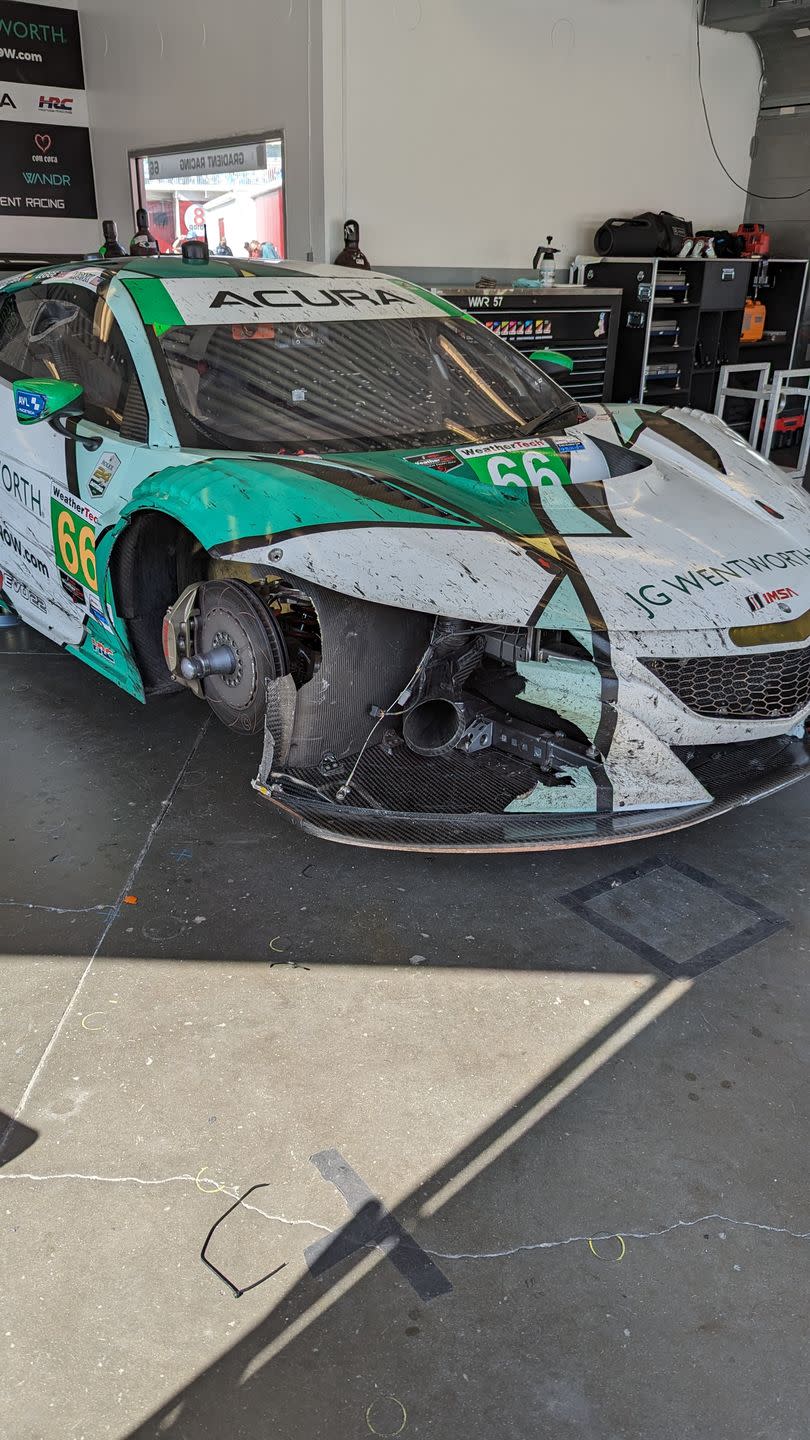
Honda Helpers
We toured the three-trailer setup HRC brought to Daytona to support Gradient's NSX, both Wayne Taylor Racing with Andretti Grand Touring Prototype entries, and five Civic Type Rs that filled out the IMSA Michelin Pilot Challenge race ahead of the Rolex 24 main event. Two trucks serve as air-conditioned control rooms where their engineers watch telemetry like surgeons paying close attention to a patient's vitals. The trailer includes a dedicated debrief room, for team consultation and post-race argument. Gross told us most of the consultation and debriefing business has moved to video conference on Microsoft Teams, which started as a necessary precaution during the pandemic.
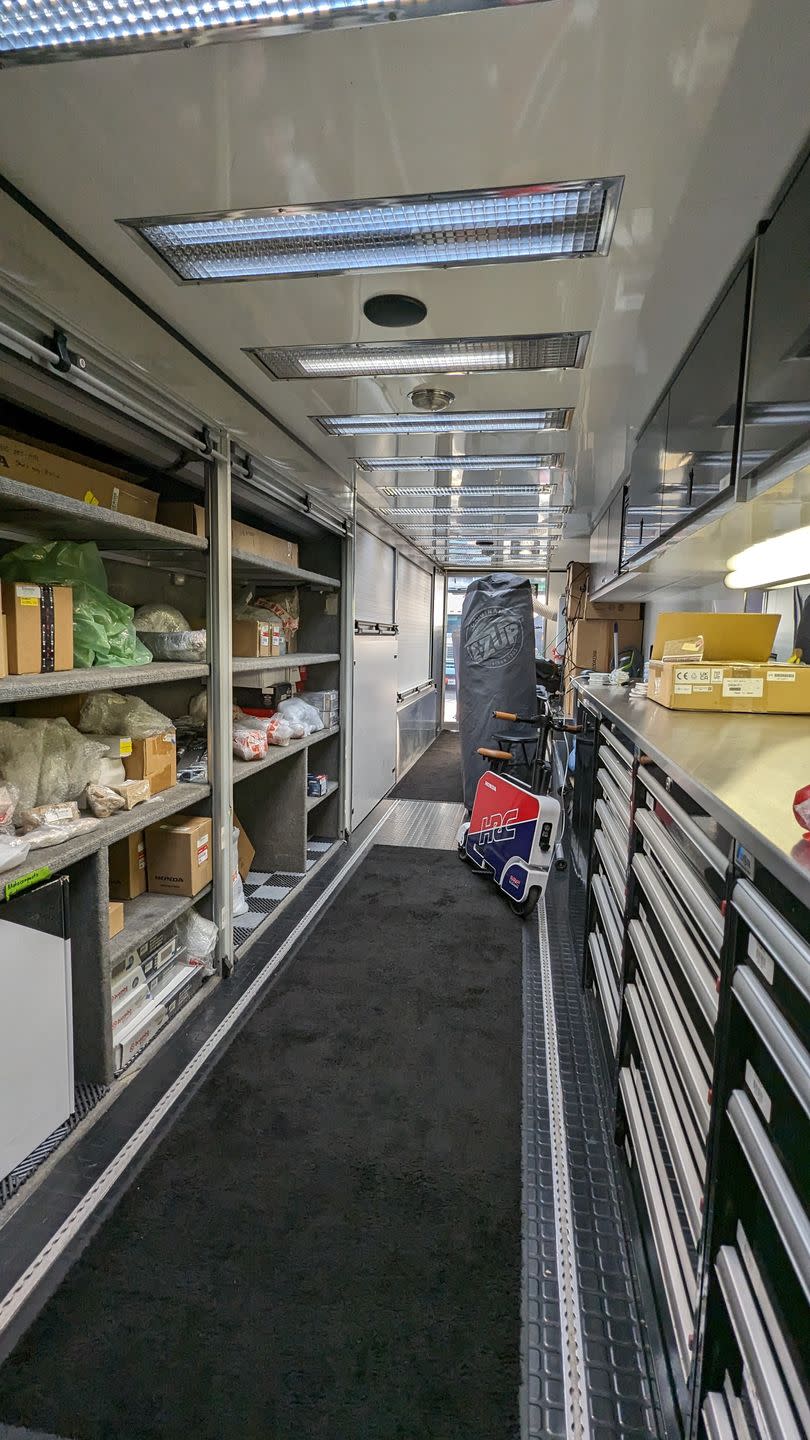
We chased Gross on a Motocompacto electric scooter through the thick forest of IMSA fans at this year's race to the truck storing all the goodies. While it's tough to walk the fan zone without bumping into an IMSA merch booth, the towering blue and red HRC trailer is the only storefront with 1.5-liter turbocharged inline-four Civic Type R engines for sale. The HRC team told us driveshafts and brakes are the most popular parts teams shop the HRC truck for. They brought three engines to support the TCR series and still had two left after the race was over.
Ahead of each race, teams receive a list of the some 1000 parts aboard the truck, how many are on hand, and their prices, and the HRC team supplies replacement carbon fiber body panels, exhausts, turbochargers, and even the J.A.S. race hardware engineered in Italy. Not that anyone bothered to ask, but we thought these HRC trucks had the best livery off the race weekend.

Laivins told us a major advantage of competing with the NSX is the local support from HRC. "When it comes to running the Acura NSX, the parts and support are already here in North America. We're based in Austin, Texas, so being able to communicate with people and ship items that are already in the U.S. makes a big difference." Despite the funky electrical issues they experienced this year, Laivins went on to praise the NSX's strongest characteristics. "This powertrain has always been super reliable for us, and the traction system always kept us fast in the rain."
The NSX, which was built in Ohio with most other Acuras at Honda's Marysville plant, would begin life here in the United States, then get shipped to Milan, Italy, before going under the knife for transformation into a GT3 car by J.A.S. Motorsport. The NSX GT3 uses a twin-turbocharged 3.5-liter V-6, the largest in the grid, and a six-speed sequential transmission. Its power and weight are BOP'd (balance of performance) to limit the advantages and disadvantages of its competitors at each race track.
For the rest of the season, the NSX will battle against GTD-class GT3 racecars such as the Ferrari 296 GT3, Mercedes-AMG GT3, Lamborghini Huracan GT3 Evo2, Porsche 911 GT3 R, BMW M4 GT3, Lexus RC F GT3, Chevrolet Corvette Z06 GT3.R, Ford Mustang GT3, and Aston Martin Vantage GT3 Evo.
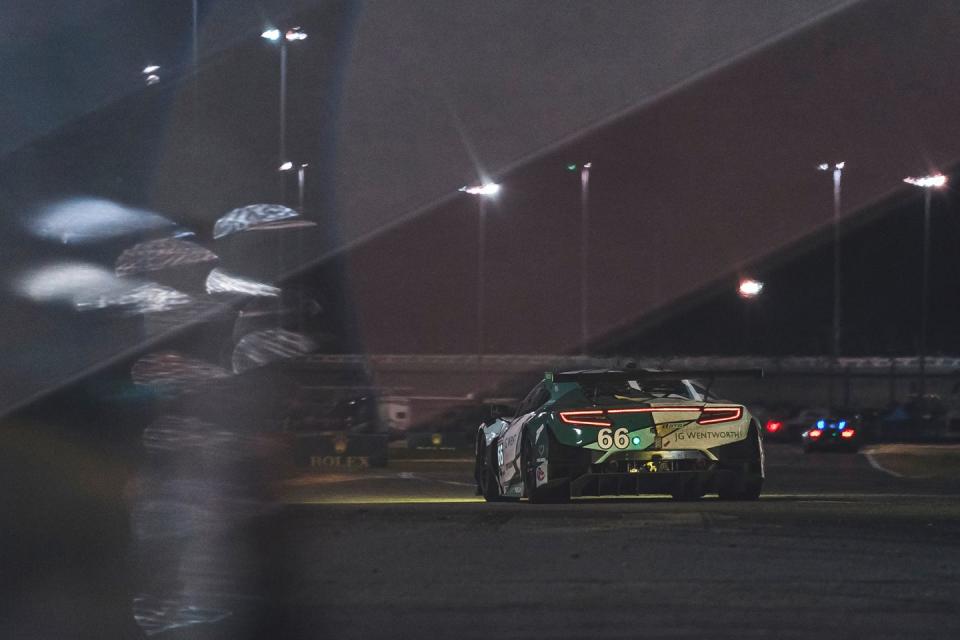
For now, HRC tells us there isn't an immediate GT3 replacement for the NSX in IMSA. In Japan's Super GT, however, the wildest-looking Civic Type R will serve as a replacement when the GT500 class racing schedule begins in April.
We asked Laivins if he had gone race-car shopping yet for next year; he reminded us of the 10 races left in the season his team is focused on winning, first. We wish them luck in March as the IMSA WeatherTech SportsCar Championship drops another green flag in Florida at the Mobil 1 12 Hours of Sebring.
You Might Also Like

 Yahoo Autos
Yahoo Autos 